Tristan Tzara and the Jewish Roots of Dada, Part 2
Other Jews involved with Zurich Dada
Among the other Jewish artists and intellectuals who joined Tzara in neutral Switzerland to escape involvement in the war was the painter and sculptor Marcel Janco (1895–1984), his brothers Jules and George, the painter and experimental film-maker Hans Richter (1888–1976), the essayist Walter Serner (1889–1942), and the painter and writer Arthur Segal (1875–1944).
Marcel Janco was a significant leader within the Dada movement. Born Marcel Hermann Iancu, Janco grew up in a family of upper-middle-class Jews in Bucharest. Having enrolled to study chemistry at the University of Zurich, in 1916 Marcel and his brother Georges reunited with their childhood friend Tristan Tzara at the opening night of the Cabaret Voltaire. Janco’s primary contributions to Zurich Dada consisted of painting as well as etching and woodcut designs for posters and journal covers for Tzara. Hockensmith notes that Janco’s work in each of these media “was highly influenced by primitive art, which the Dadaists understood broadly as the art of Oceanic and African peoples, the art of the mentally ill, and the art of children.” She notes that “For Janco, as for other Dada artists, the primitive provided a means of escape from the bankruptcy of the western European traditions of painting and sculpture.”[i]
While in Zurich, Janco sculpted an oversize mask of Tzara made from paper, board, burlap, ink and gouache. The mask shows Tzara in ochre and purple, with a twisted, distorted face. In masks like this Janco used African art as a means of breaking with the European tradition and to show that art could be conjured up from even the crudest materials.[ii]
In 1940 Janco fled Europe and took refuge in Tel Aviv, where in 1953 he founded the Israeli artist colony at Ein Hod. A revered figure in Israel, The Janco Dada Museum was established in his honor there in 1983. It exhibits the work of Janco and other Jewish artists from the Dada and Surrealist movements.
Johannes Siegfried Richter was born into a wealthy Jewish family in Berlin. Wounded while training with the German military, Richter and his wife travelled to Switzerland to consult physicians about his back injuries; while in Zurich he met up with Tristan Tzara and Marcel Janco. From 1917 to 1919 Richter was closely involved with Dada events, exhibitions, and publications, as well as producing paintings he called “visionary portraits”. As a Jew and modernist artist and filmmaker, Richter was forced to leave Germany in the thirties and migrated to the United States where he taught at the Film Institute of City College in New York.
Arthur Aron Segal grew up in provincial city of Botosani, Romania, the son of middle-class Jews. At the outbreak of World War I Segal fled to Switzerland and settled in a small village near Zurich with a reputation as a refuge for artists and intellectuals. Segal’s house soon became a gathering place for those associated with Zurich Dada, including Tzara. Segal exhibited his paintings at the Cabaret Voltaire and later at the Kunstsalon Wolfsberg. The inventor of “simultaneous painting” and “spectralism,” Segal applied the concept of “artistic equivalence” in his abstract paintings, which was derived from the ethical principle of equality and non-hierarchical organization. Sandqvist maintains that the Hassidic conviction according to which “all people are equal before God and before themselves in an ultimate, immovable harmony” was translated by Segal into his artistic theory, a theory that had an explicitly radical political spin.[iii]
Segal contributed woodcuts to Dada journals like Dada 3 and Der Zeltweg. When Romania entered the war in 1916 he officially became a draft dodger. At the end of the war he moved to Berlin and became a member of the Novembergruppe, an artist society with communist sympathies formed just after the November Spartacist Revolution in Germany to promote the integration of art and society. Segal fled Berlin in 1933, first to Mallorca, and then to London in 1936 where he reopened his painting school.
Walter Serner (born Walter Eduard Seligmann) fled to Zurich from Vienna in 1915 to avoid being conscripted and to avoid arrest for forging a doctor’s certificate of ill health for a friend. Unlike other Dadaists he initially believed that rational understanding produced the best kind of social criticism and denounced the early Dadaist for their “unforgivable blasphemy against the intellect” and of not offering any real alternative to what they wanted to destroy. This position was soon to change drastically and Serner joined Tzara in becoming one of the most radical of the Dadaists. In 1918 he wrote a Dadaist manifesto entitled “Letze Lockerung” (Final Dissolution) which he read out at the eighth Dada soirée in April 1919, and which was published in the Anthologie Dada the following month. This manifesto, Serner’s most significant contribution to Zurich Dada, “expresses a profound nihilism that Hans Richter would later characterize as the ‘definitive watchword of all that Dada meant philosophically.’ In it, Serner annihilated the ground of aesthetic judgement and creation, dismantling convention with irony and obscenity.”[iv]
After Zurich, Dada was to take root in Berlin, Cologne, Hanover, New York and Paris, and each time it was Tristan Tzara who forged the links between these groups, by organizing (despite the disruption of the war) exchanges of pictures, books and journals. In each of these cities Dadaists “gathered to vent their rage and agitate for the annihilation of the old to make way for the new.”[v] Tzara had made strident antinationalism a central tenet of Dada, and Dickerman observes that “Dada’s promotion of a proto-globalized identity is even evident in the stationary that Tristan Tzara produced for the ‘Mouvement Dada’ in Paris, which mimicked corporate models by listing Dada branches underneath the letterhead.”[vi]
Dada in Paris
By 1919, when Tzara left Switzerland to join the poet André Breton in Paris, he was, according to Richter, regarded as an “Anti-Messiah” and a “prophet”.[vii] His 1918 Dada Manifesto in the third edition of Dada had appeared in Paris and, according to Breton “Tzara’s 1918 Manifesto was violently explosive. It proclaimed a rupture between art and logic, the necessity of the great negative task to accomplish; it praised spontaneity to the skies.”[viii] It was felt by the editors of the avant-garde literary review Littérature that Tzara could fill the gap left after the deaths of Apollinaire (another Jew) and Vaché. Gale notes that “Tzara immediately became the most extreme contributor to Littérature,” and by the end of 1919 “the Littérature editors had to defend his work from nationalistic attacks in the Nouvelle Revue Française.”[ix] Nevertheless, a coordinated Dada insurgency was not really achieved until Tzara’s arrival in Paris the following year.
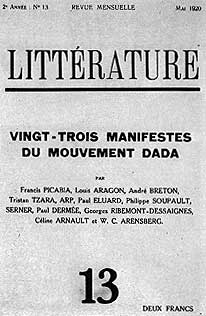 In addition to his messianic zeal, Tzara brought to Paris Dada a skill in managing events and audiences, which transformed literary gatherings into public performances that generated enormous publicity. In the five months from January 1920 he helped organize six group performances, two art exhibitions and more than a dozen publications. Dempsey notes that “the popularity of these events with the public soon turned these revolutionary ‘anti-artists’ into celebrities. The cumulative effect of this first ‘Dada season’ as it became known, was to mark the movement as a nihilistic collective force leveled at the noblest ideals of advanced society.[x] The performances with which Dadaists tested their Parisian audience were consistently aggressive in nature, and aggression characterized many of their artworks and journals. As one source notes: “Like the plays and stage appearances, individual works produced within Dada emanate a violent humour, ranging from vulgar to sacrilegious language to images of weapons and wounds, or references to taboos great and small: suicide, cannibalism, masturbation, vomiting.”[xi]
In addition to his messianic zeal, Tzara brought to Paris Dada a skill in managing events and audiences, which transformed literary gatherings into public performances that generated enormous publicity. In the five months from January 1920 he helped organize six group performances, two art exhibitions and more than a dozen publications. Dempsey notes that “the popularity of these events with the public soon turned these revolutionary ‘anti-artists’ into celebrities. The cumulative effect of this first ‘Dada season’ as it became known, was to mark the movement as a nihilistic collective force leveled at the noblest ideals of advanced society.[x] The performances with which Dadaists tested their Parisian audience were consistently aggressive in nature, and aggression characterized many of their artworks and journals. As one source notes: “Like the plays and stage appearances, individual works produced within Dada emanate a violent humour, ranging from vulgar to sacrilegious language to images of weapons and wounds, or references to taboos great and small: suicide, cannibalism, masturbation, vomiting.”[xi]
It was widely observed at the time that the spectacles and output of Paris Dada constantly exhibited a “profound violence: physical hurt, damage to language, a wounding of pride or moral spirit,” that to native observers seemed wholly “uncharacteristic of French sensibility.”[xii] Comoedia, a Parisian arts daily focused on theatre and cinema, soon became the central forum for debates over Dada and its effects on French audiences. Charges of enemy subversion, lunacy and charlatanism regularly appeared — just as it did in many German newspapers — pretexts to isolate what seemed to many a traitorous insurgency against bedrock national values.[xiii] Attacks on Dada in Paris soon took on an openly anti-Semitic tone when the French writer Jean Giraudoux, in explaining his rejection of Dada, pointed out: “I write in French, as I am neither Swiss nor Jewish and because I have all requisite honours and degrees.”[xiv]
The French cultural establishment had looked askance at Dada since it had arrived in Paris at the beginning of 1920. It was common knowledge that the Dadaists were avowed partisans of revolution and the communist uprisings in Berlin and Munich that had barely been put down. Trotsky’s red legions were then cutting a swathe of death and destruction in Poland, and perceiving that a Jewish ethnic agenda united Trotsky’s Bolshevism and Tzara’s Dada, the La Revue de l’Epoque declared: “The grand master of Dadaism is in reality the Jew Bronstein called Trotsky.”[xv] The connection was confirmed in the minds of many Parisians by Dada’s appearance at socialist and anarchist venues in the city. The connection was also clear in the mind of the Romanian nationalist Nicolae Rosu who noted that: “Dadaism and French Surrealism exploit the moral and spiritual exhaustion of a war-torn society: the aggressive revolutionary currents in art seem to be an explosion of primal instincts detached from reason; post-war German socialism, largely developed by Jews, uses the opportunity of defeat to dictate the Weimar constitution (written by a Jew), and then through Spartakism, to install Bolshevism. Russian Bolshevism is the work of Jewish activists.”[xvi]
In October 1920, the messianic Walter Serner arrived in Paris and reconvened with Tristan Tzara, who had just returned from his first visit to Romania since 1915. However, Serner’s campaign of shameless self-promotion, which included placing an advertisement in a Berlin newspaper describing himself as the world leader of Dada, was resented by Tzara, who was eager to establish his own priority as leader. By 1921 many of the original Dadaists had converged on Paris, and arguments between members created difficulties. By 1922 internal fighting between Tzara, Francis Picabia, and André Breton led to the dissolution of Dada.”[xvii] Dada was officially ended in 1924 when Breton issued the first Surrealist Manifesto. Hans Richter claimed that “Surrealism devoured and digested Dada.”[xviii] Tzara distanced himself from the new trend, disagreeing with its dream-centered Freudian dynamic, despite its anti-rationalism. As Robert Short notes:
For Tzara, automatism [literary and artistic free association] was a visceral spasm, an explosion of the senses and the instinct that expressed the primitive and chaotic intensity in man and Nature. Where Surrealist automatism was introverted and sought to reveal patterns in the human unconscious, Dada art mimicked an objective chaos. … Surrealism was to prospect and exploit a vast substratum of mental resources which the Western cultural and economic tradition had deliberately tried to seal off. In place of science and reason, Surrealism was to cultivate the image and the analogy. In its efforts to restimulate the associative faculties of the mind, it turned its attention with respect and enthusiasm toward the thought processes of children and primitive peoples, towards the lyrical manifestations of lunacy and the synthesizing notions of occultism.[xix]
Tzara also disagreed at times with the political orientation of Surrealism which evolved from the near-nihilist anarchism of the Dadaists to a strict adherence to the Communist Party line by the late 1920s, and then to Trotskyism following Breton’s personal meeting with Trotsky in Mexico in 1938.[xx] Nonetheless, Tzara willingly reunited with Breton in 1934 to organize a mock trial of the Surrealist Salvador Dalí, who at the time was a confessed admirer of Hitler.[xxi]
Tzara’s own politics were profoundly radical and with Hitler’s ascension to power in 1933 effectively marking the end of Germany’s avant-garde, Tzara threw his support behind the French Communist Party (PCF). The allegiance of the great majority of Dadaists to Marxism was paradoxical given that Marxist dialectical materialism and forecast of the historical inevitability of communist revolution was based on a kind of mathematical rationalism that ran directly counter to the Dada spirit.
Tzara’s allegiance to Marxism-Leninism was reportedly questioned by the PCF and the Soviet authorities. This was because Tzara’s irregular vision of utopia made use of particularly violent imagery — shocking even by Stalinist standards.[xxii] Tzara backed Stalinism and rejected Trotskyism (at least publically), and unlike some of the leading Surrealists, even submitted to PCF demands for the adoption of socialist realism during the writers’ congress of 1935. Nonetheless, Tzara still interpreted Dada and Surrealism as revolutionary currents, and presented them as such to the public. After the outbreak of the Spanish Civil War he briefly visited Madrid with the Soviet Jewish reporter and future mass-murderer Ilya Ehrenburg while it was under siege by the Nationalists.[xxiii]
During World War Two, Tzara took refuge from the German occupation forces by moving to the southern areas controlled by the Vichy regime. Back in Romania he was stripped of his Romanian citizenship, and his writings were banned by the regime of Ion Antonescu along with 44 other Jewish-Romanian authors. In France, the anti-Semitic and pro-German publication Je Suis Partout made his whereabouts known to the Gestapo. In late 1940–early 1941, he joined a group of anti-Nazi and Jewish refugees in Marseille who were seeking to flee Europe. Unable to escape occupied France he joined the French Resistance and contributed to their published magazines, and managed the cultural broadcast for the Free French Forces clandestine radio station.
During 1945, he served under the Provisional Government of the French Republic as a representative to the National Assembly, and two years later received French citizenship. Tzara remained a spokesman for Dada, and in 1950 delivered a series of nine radio addresses to his Parisian audience discussing the topic of “the avant-garde revues in the origin of the new poetry.”[xxiv] Towards the end of his life Tzara returned to his Jewish mystical roots, with Codrescu noting that “After Dada, after Surrealism, after fighting against Fascists in the Spanish Civil War, after the Second World War, after the Holocaust, after membership of the French Communist Party, Tzara returned to the Kabbalah. He studied and wrote about the secrets of the language of Villon and Rabelais, in whose work he discerned the mystical workings of the Kabbalistic Language Crystal.”
In 1956, Tzara visited Hungary just as the hated government of Imre Nagy faced a popular revolt (with strong undercurrents of anti-Semitism), and while receptive of the Hungarians’ demand for political liberalization, did not support their emancipation from Soviet control, describing the independence demanded by local writers as “an abstract notion.” He returned to France just as the Revolution broke out. Ordered by the PCF to be silent on the events in Hungary, Tzara withdrew from public life, and dedicating himself to promoting the African art that he had been collecting for years. He died in 1963 and was buried in the Montparnasse cemetery in Paris.
Go to Part 3.
REFERENCES
Beitchman, P. (1988) ‘Symbolism in the Streets’, In: I Am a Process with No Subject, University of Florida Press, Gainesville.
Bradley, F. (2001) Movements in Modern Art – Surrealism, Tate Gallery Publishing, London.
Codrescu, A. (2009) The Posthuman Dada Guide: tzara and lenin play chess, Princeton University Press, Princeton.
Dempsey, A. (2002) Styles, Schools and Movements – An Encylopaedic Guide to Modern Art, Thames & Hudson, London.
Dickerman, L. (2005) ‘Introduction & Zurich,’ In Dada Ed. By Leah Dickerman, Dada, National Gallery of Art, Washington D.C.
Gale, M. (2004) Dada & Surrealism, Phaidon, London.
Haslam, M. (1978) The Real World of the Surrealists, Weidenfeld and Nicholson, London.
Hockensmith, A. (2005) ‘Artists’ Biographies,’ In Dada Ed. By Leah Dickerman, Dada, National Gallery of Art, Washington D.C.
Livezeanu, I. (2005) ‘From Dada to Gaga: The Peripatetic Romanian Avant-Garde Confronts Communism,’ in Mihai Dinu Gheorghiu, Lucia Dragomir (eds.), Littératures et pouvoir symbolique. Colloque tenu à Bucarest (Roumanie), Editura Paralela, Paris.
Mileaf, J. & Witkovsky, M.S (2005) ‘Paris,’ In: Dada Ed. By Leah Dickerman, National Gallery of Art, Washington D.C.
Richter, H. (2004) Dada. Art and Anti-art, Thames & Hudson, London & New York.
Rojas, C. (1993) Salvador Dalí, or the Art of Spitting on Your Mother’s Portrait, Penn State University Press, University Park.
Schnapp, J.T. (2006) ‘The Dada revolution’ In: Art of the Twentieth Century – 1900-1919 The Avant-garde Movements, Skira, Italy.
Short, R. (1994) Dada and Surrealism, Laurence King Publishing, London.
Waldberg, P. (1997) Surrealism, Thames & Hudson, London.
ENDNOTES
[i] Hockensmith p. 477
[ii] Gale p. 52
[iii] Sandqvist p. 296
[iv] Hockensmith p. 486
[v] Dempsey p. 115
[vi] Dickerman, p. 1
[vii] Richter p. 168
[viii] Bradley, p. 18-19
[ix] Gale p. 180
[x] Mileaf & Witkovsky p. 349
[xi] Ibid. p 358
[xii] Ibid. p. 350
[xiii] Ibid. p. 352
[xiv] Ibid. p. 366
[xv] Haslam p. 65
[xvi] Codrescu p. 174
[xvii] Dempsey p. 119
[xviii] Richter p. 191
[xix] Short p. 69 & 83
[xx] Waldberg p. 18
[xxi] Rojas p. 98
[xxii] Beitchman p. 48-49
[xxiii] Livezeanu, p. 245-246
[xxiv] Hockensmith p. 489

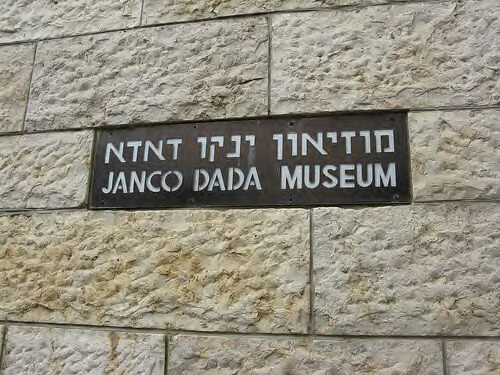
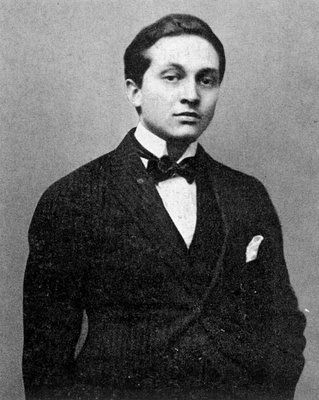
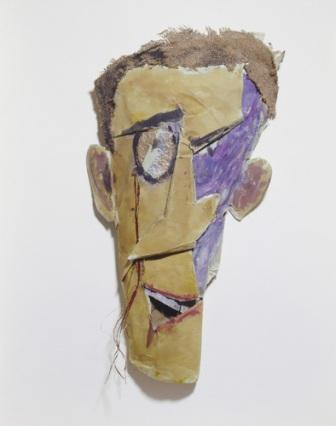
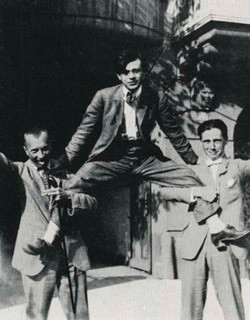
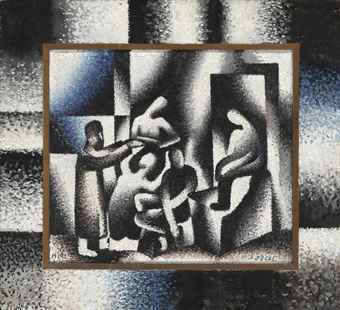
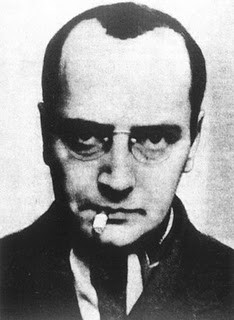
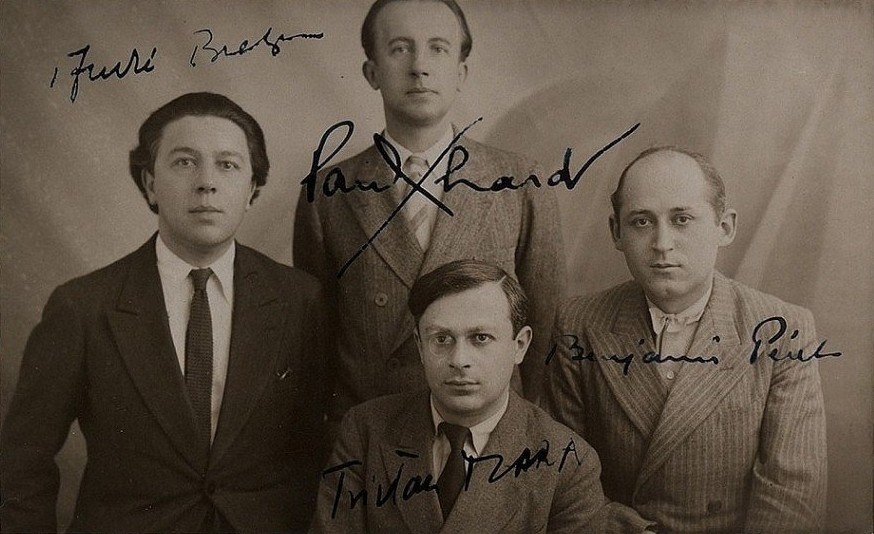




Comments are closed.